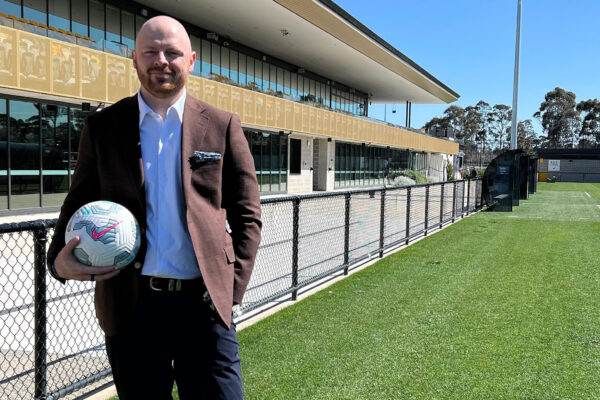
The very foundation of scouting has changed forever.
Eyeball is an Artificial intelligence (AI) powered product designed to assist footballing entities in scouting the potential football athletes from various countries around the world.
With over 100,000 players within the technologies database all comprised of youth players, football clubs across the globe are raising their eyebrows as to what this brilliant technology can provide.
The system acts as a football scout. Remotely and in the convenience of a smartphone device, the search and evaluation of performance capacity of the players within its database can be compared to football’s finest players. The service prides itself on optimising academy recruitment, without a club worrying about the financial difficulties involved in travel or acquisition of scouting personnel.
The contemporary scouting platform has an established and researched insight database, all gathered from the youth academies of Europe’s leading football giants.
European markets including the footballing nations of Spain, England, Germany, Holland, Belgium, and Croatia are also joined by the African markets of Ghana, Mali, Ivory Coast, Nigeria, Guinea, Senegal and Sierra Leone. These are the markets in which Eyeball operate within, acting as the ever growing customer base of their elite scouting technology.
Youth scouting is strenuous. Professional clubs who are struggling within their respective leagues due to being less financially opportunistic, are already on the back-foot. With its locality and lack of scouting network, the fundamental exercise in terms of growing a club and its talent pool, becomes surplus. The purpose of Eyeball and its technology is to make the scouting process simple yet effective, as it has essentially modernised the process, bridging the gap between potential players and professional clubs.
Determined to enhance its science, searchable player data is a primary focus of Eyeball in which they seek to further improve. This is through the analysation of video data from talented players throughout the globe, combatted with the collection of a prospects data.

The data collected is imperative. Driven by 13 statistical parameters, it includes shots on target, successful dribbles, incisive passes and passes in the final third – just to name a few.
The parameters collected can be searched by the club officials using the app, perhaps on the hunt for a player in whom possess specific qualities dependent on what the club requires on the pitch.
Summaries of key stats are compiled by AI based upon data collected from partner clubs that have detailed profiles upon talent within the database. The AI technology allows partnered clubs to put these prospects into AI generated match-simulations, allowing for the assessment of a players performance all through the use of Eyeball’s data breakdown technology.
The player app feature of Eyeball can be a considered a polarizing tool in which football participants can utilise in order to garner a tangible understanding of their ability. The player app allows players to access performance data from within the platform while also showcasing to the scouts using the technology, the ability in which the player possesses.
Games can be watched back by players, while Eyeball analyses the games and a breakdown of the performance. This allows players and coaches to make the necessary changes to a players training routine, showcasing the areas in which are in need of improvement.
It basically allows a player to sell themselves to scouts. Professional clubs are examining the profiles and the players are able to customize their profile, showcasing their greatest qualities in-match highlights. Matches can be watched back and analysed, as they are stored within Eyeball’s database.
Individuals can hunt for specific match moments, with a play-by-play game events feature dissecting every move a player makes throughout matches documented. Eyeball’s analysts watch each match closely, providing a breakdown of performance statistics. Players distribution performance, as well as their offensive and defensive performances are outlined.
Eyeball possesses the ambition of wanting to become a pioneer in bridging the gap between talented youth prodigies and becoming the next generational top tier of talent across the globe. All through the inclusive access of insight and data performance surveyed and interpreted through its system.
Over 100 professional clubs are using the Eyeball technology, with the company making major waves in regards to the foundation in which scouting is exercised. Perhaps it would be in the interest of Australia professional clubs to also utilise this ground-breaking technology for their benefit.














